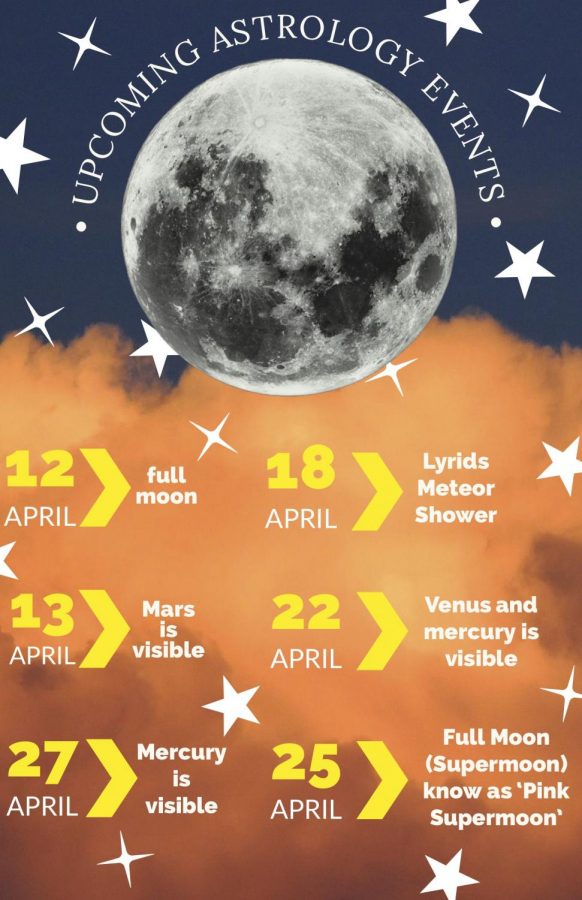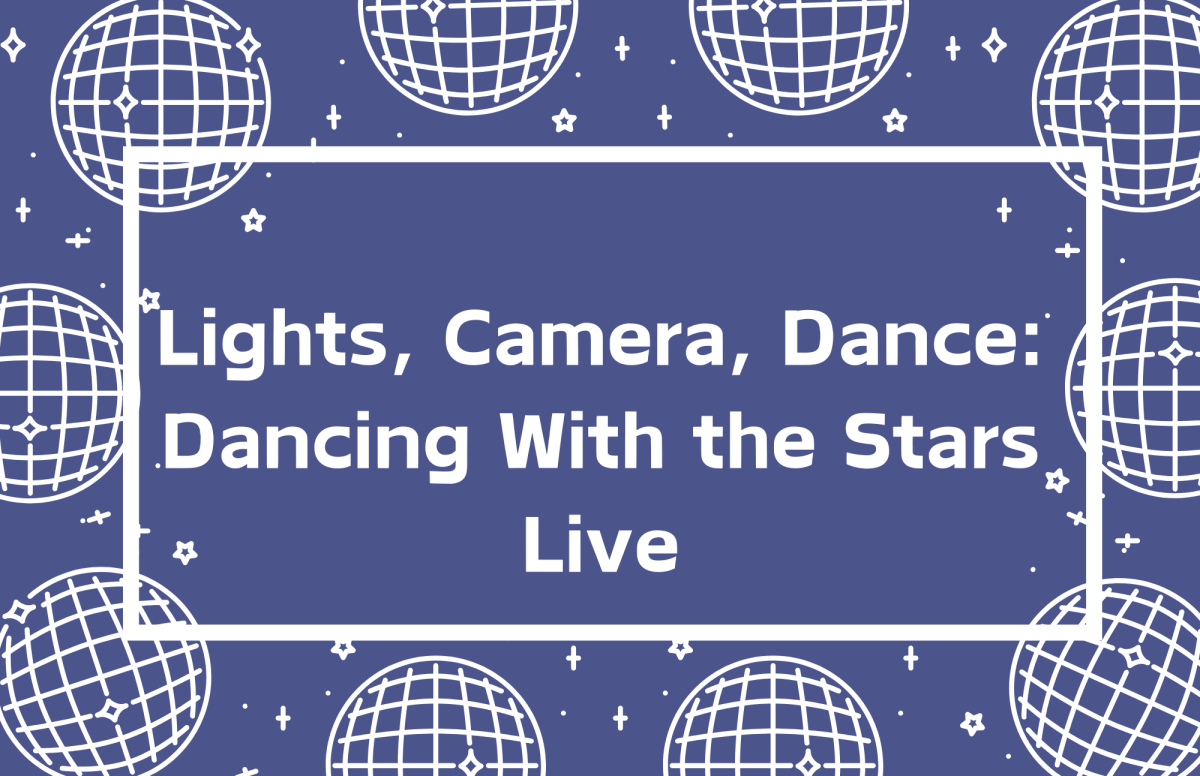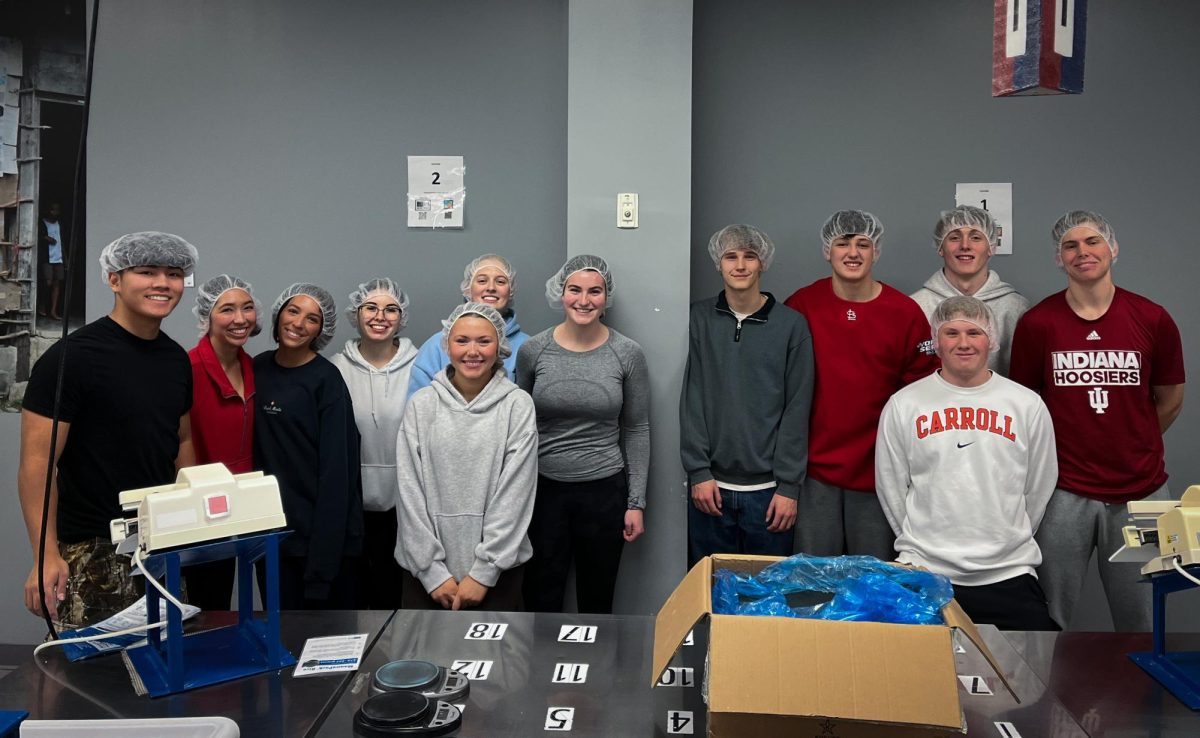On April 12, the first full moon of April will appear. The full moon occurs when the Moon does a full rotation around the Earth and the Sun lights it up so an entire side is visible. To the human eye, the full moon appears for two to three days. The Moon then goes through another full cycle for about twenty-nine and a half days. To qualify as a second full moon, however, most experts, according to Earthsky, will say the Moon has to only be around 90% of its closest distance to the Earth in its orbit. This is why there will be a supermoon in April, May, and June of 2021 despite the month’s first full moon not being within the first or second days of the month. Experts tend to disagree over this as there is not an official supermoon definition by the International Astronomical Union.
Just after dusk on April 13—with the full moon still in sight—Mars may be visible if the sky is clear. Mars typically looks like a small red dot and is one of the more common planets to be seen as it is one of the Earth’s two neighboring planets.
The Earth’s other neighboring planet, Mercury, is expected to be visible on April 18 if the night is clear. It should be able to be seen with binoculars if no clouds are present, but the Sun must be completely down to ensure optic protection. Mercury is only visible every three to four months.
The second meteor shower of 2021, the Lyrids meteor shower, will also be occurring this month. This shower is an annual April event and is considered one of the more exciting annual ones to witness. It’s expected to begin April 19 and peak on April 22. Any hour between midnight and dawn will have the best chances to catch the sights, so, with sleep schedules sacrificed, the best night to watch will be in the early morning of Friday, April 23. According to Earthsky, the Lyrids meteor shower is one of the oldest meteor showers and the source of it is Comet Thatcher. The Comet’s orbit around the Earth is 415 years, which is why there are no available pictures of it.
“I’ve always wanted to see a meteor shower,” junior Sidney Tindell said. “I’ve never had the chance to.”
While there will not be any rare, once-in-a-lifetime meteor showers, there will be several annual meteor showers throughout the year. The hopefully visible ones will be Eta Aquarids in May, Delta Aquarids in July, Perseids meteor shower, a famously visible one to watch, in August, the Draconids and Orionids in October, Taurids and Leonids in November and Geminids and Ursids in December. According to Seasky, The Geminids shower is supposed to be the best meteor shower to watch as it produces many meteors per hour that are typically multicolored.
Some months there are very few planet sightings; however, April might allow the sight of three to the bare eye. Seeing the planets might require a trained eye, but the last few days of April, most likely April 25 and April 26, might allow for the visible sighting of both Venus and Mercury passing the Earth together.
Finally, the pink super moon will be the last special event of April this year. A supermoon is when there are two full moons in one month. 2021 is a special year because there will be three or four super moons throughout the year depending on how one chooses to define a full moon. Each month has a different name for the supermoon, should it occur during that month. April will be the first, called the ‘Pink Super Moon.’ According to Space.com, it is named the Super Pink Moon after a pink flower, the ground phlox, which blooms in early April. The moon contradicts its name unfortunately, as it will not have a pink hue. This is a common misconception as many photographs of the moon will be slightly edited to embrace the color of its name but, unless you happen to catch a pinkish hue reflected off clouds during sunset, the moon will be its natural color.
“I heard about the pink super moon,” sophomore Sydney Parker said. “I saw a bunch of people posting about that on all of social media … I am excited for the pink moon because I think it would be super pretty.”
If you miss any of the events in April, there will be plenty of other opportunities throughout the year. May will have a supermoon called the Flower moon followed by June with the Strawberry moon. In May, along with the super moon, there will be an annual meteor shower and total lunar eclipse.











